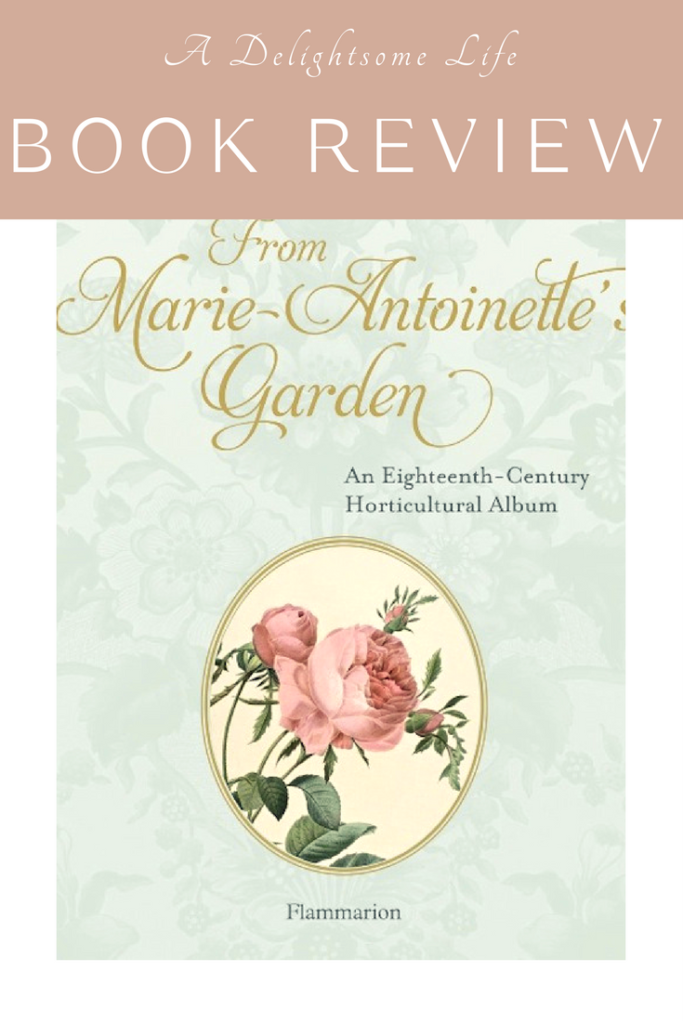A Book Review
What do you know of Marie-Antoinette?
Marie-Antoinette, an enigmatic figure of history who has sparked interest, mystery and wonder. Her presence brought to mind the ideal of spring in her beauty and in her propensity for carrying around the fragrant flowers she adored.

p.39: Bearded German iris. © Muséum national d’Histoire naturelle, Dist. RMN / image du MNHN, bibliothèque centrale, Redouté Pierre Joseph (1759-1840)
An Austrian Arch-duchess
Marie-Antoinette arrived in France at the tender age of fourteen-and-a-half. As she arrived she received a warm reception from the King and from the people of France, ‘Madame, 200,000 people are in love with you here!’
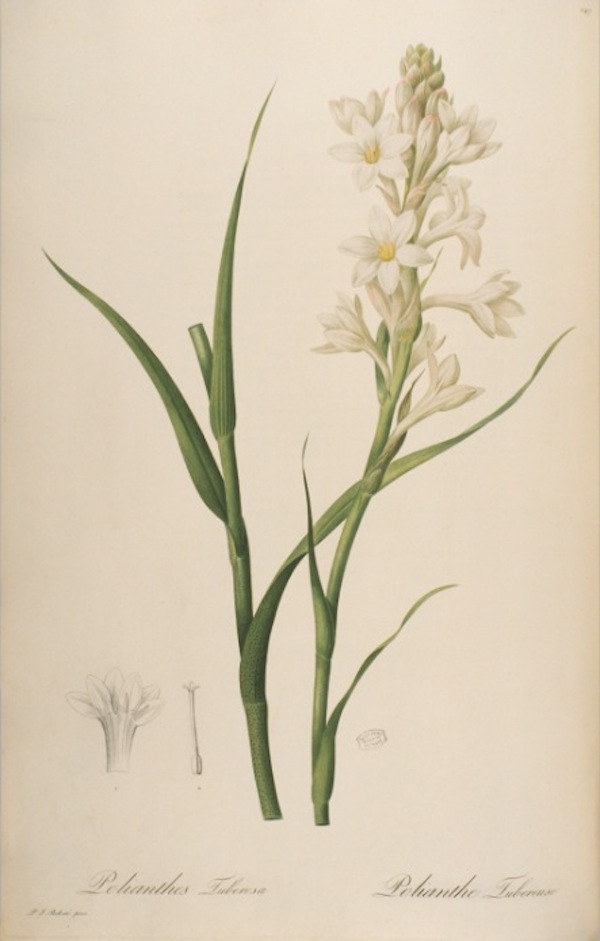
p.47: Tuberose. © Muséum national d’Histoire naturelle, Dist. RMN / image du MNHN, bibliothèque centrale, Redouté Pierre Joseph (1759-1840)
Baroness Oberkirch recalled, ‘young girls aged between fifteen and twenty came forward to spread flowers at the princess’s feet, and she for her part, greeted them as though she were Flora herself…she received us with simplicity and grace, so that all hearts were conquered…nothing can adequately describe her radiant complexion, a most perfect mixture of the lily and the rose’.

p.52: Orange. © Muséum national d’Histoire naturelle, Dist. RMN / image du MNHN, bibliothèque centrale
A few years after marrying King Louis XVI in 1770, Marie-Antoinette lived in the Palace of Versailles, but made The Trianon her home.
‘When the Queen took possession of her private domain, her interest was focused first and foremost on the garden…She oversaw the work on the garden according to plans drawn up by the comte de Caraman….Marie-Antoinette set a new style, eager to create a setting for country walks and activities, reflecting her own personality: charming, modern and original’.
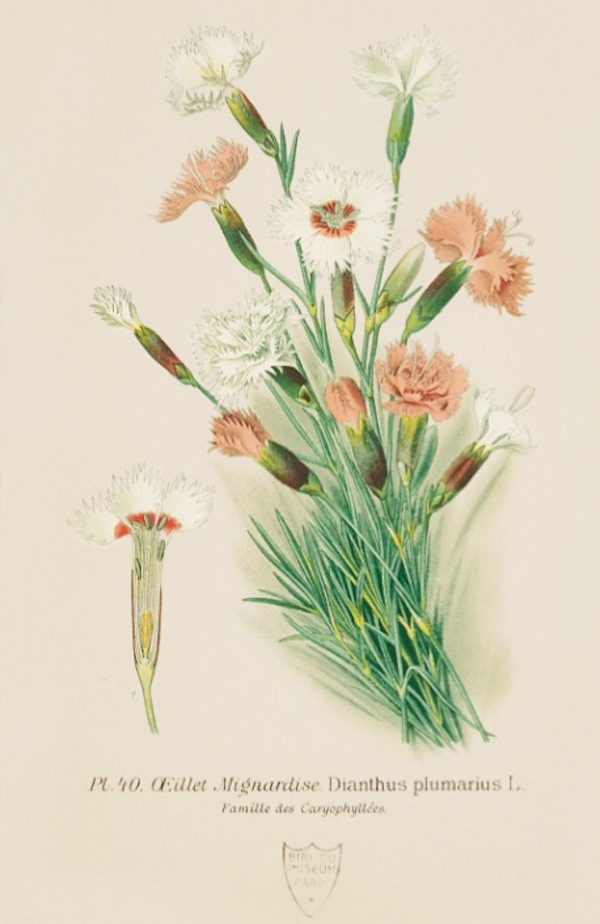
p.54: Carnation. © Muséum national d’Histoire naturelle, Dist. RMN / image du MNHN, bibliothèque centrale
The Petit Trianon
‘The Petit Trianon was Marie-Antoinette’s refuge from the world, presented to her by Louis XVI in 1774, with these words: ‘To you who love flowers so, I present this bouquet’. By the same token, the king was making it known that his wife would be his sole lover and ‘favorite’.”
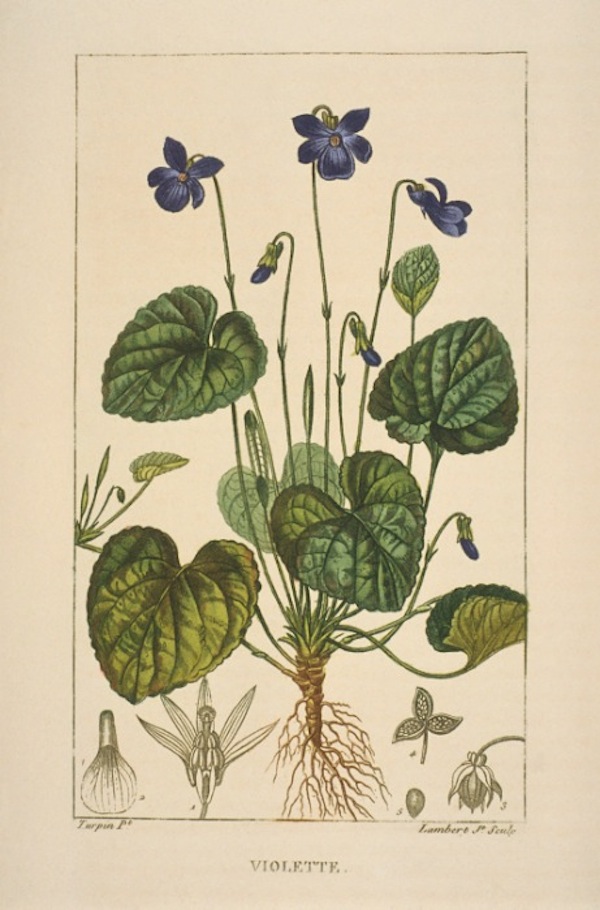
p.131: Wood violet. © Muséum national d’Histoire naturelle, Dist. RMN / image du MNHN, bibliothèque centrale, Turpin Pierre Jean François (1775-1840)
Not without controversy
As with many historical figures, they gender admirers and critics alike. Marie-Antoinette’s unconventional and youthful approach to life exposed her to rumors and to disapproving opinions. At the time of Louis’ reign, the country of France and the people of Paris experienced difficult times with famine and with high taxes. Marie-Antoinette’s expenditures towards her beloved gardens garnered wrath from advisors causing strife amongst the people.
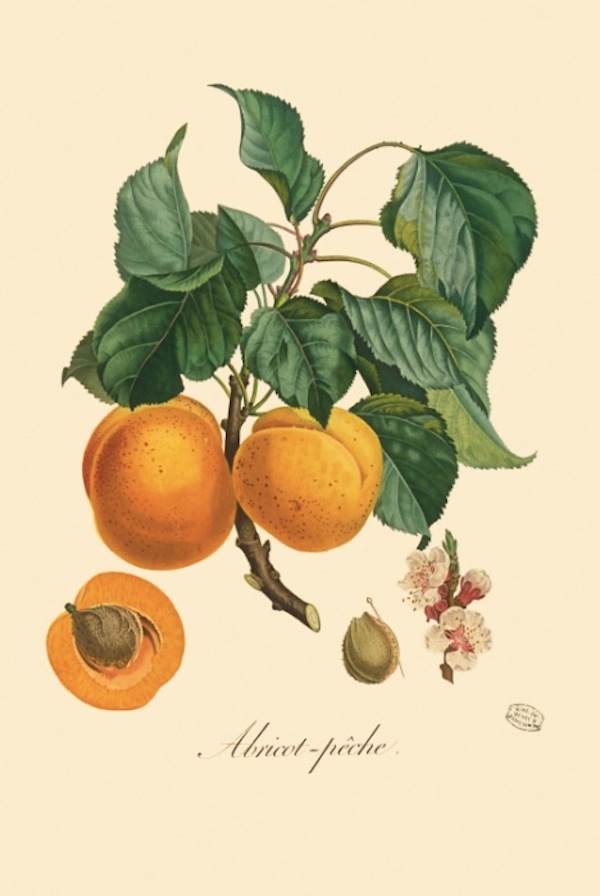
p.195: Apricot. © Muséum national d’Histoire naturelle, Dist. RMN / image du MNHN, bibliothèque centrale, Bouquet Louis (1765-1814)
‘The queen sought to recreate the landscapes of her childhood at the Petit Trianon; in doing so, she was full aware of the disapproval of the court.’ Marie-Antoinette wrote to her brother, ‘ Its the same everywhere–wicked gossip is rife, and the simplest things become deadly sins…’.
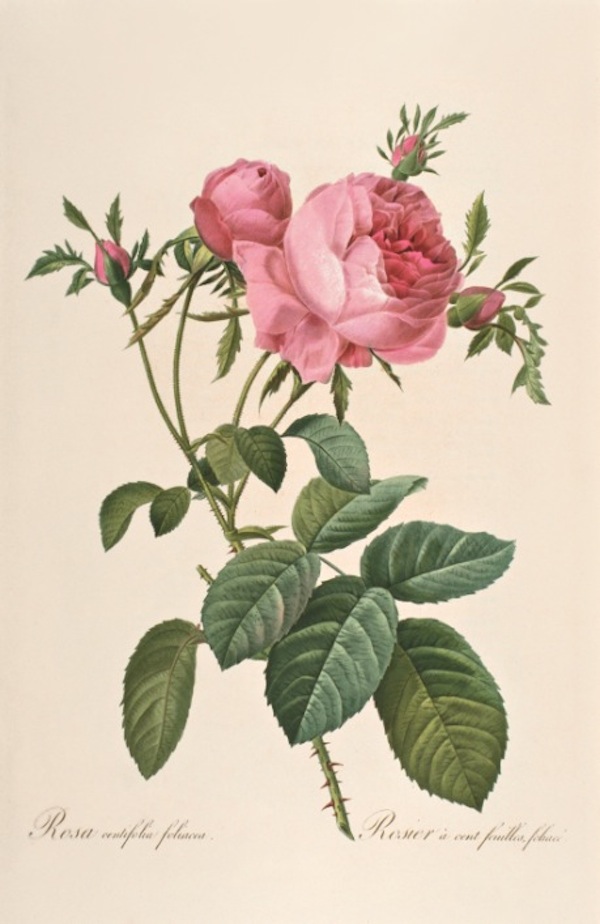
p.207: Cabbage rose. © Muséum national d’Histoire naturelle, Dist. RMN / image du MNHN, bibliothèque centrale, Redouté Pierre Joseph (1759-1840)
‘Plants, flowers, and trees were Marie-Antoinette’s passion and beyond that, her symbolic expression of freedom.’
From Marie Antoinette’s Garden: An Eighteenth-Century Horticultural Album
is a compilation of the plants and flowers – identifying those that were among Marie-Antoinette’s favorites, as if she herself recorded in an herbarium each specimen and each seed that she collected from all over the world. In Marie-Antoinette’s garden you’ll learn of the French Garden, The Belvedere, The English Garden, The Wood of Solitude, The Queen’s Hamlet and The Temple of Love…each revealing different glimpses into the woman who lived an charming and at the end courageous and tragic life.
Her enthusiastic, charming personality and beauty won over the King and the people of France. She was a beautiful, breath of fresh air –
In her youthful way she enjoyed life and created a bit of country-life in the city reminscent of her home in Austria – From Marie-Antioinette’s Garden, you’ll discover the very many plants and flowers she collected, how she enjoyed them and perhaps a bit of the woman herself.

